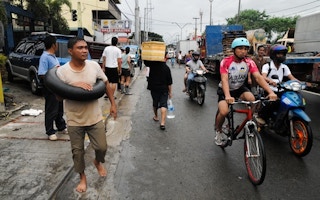The Philippines’ initial commitments to help achieve a below two degree Celsius increase in global temperatures were transmitted to the United Nations Framework Convention on Climate Change on Thursday as part of the nation’s contributions to the climate negotiations this year.
The Philippines (PH), a Party to the Conference of Parties—an annual gathering of world leaders from 195 countries that aim to address climate change, submitted its initial Intended Nationally Determined Contributions (INDC) in preparation for the highly-anticipated climate talks this coming December.
A country’s INDC identifies its climate change mitigation and adaptation actions that will be implemented beyond 2020.
Submitted INDCs will be turned into a synthesis report by the UNFCCC and help determine if the world can pave a way towards a climate-resilient and climate-smart future.
“These initial commitments are anchored on our policy declaration under the Climate Change Law of 2009, as amended in 2012, that the State shall cooperate with the global community in the resolution of climate change issues,” Climate Change Commission Secretary Lucille L. Sering said.
“Our INDC is based on our philosophy of undertaking mitigation as a function of adaptation, therefore, we will still prioritize adaptation measures,” she added.
The country committed to reduce by 70 per cent, its carbon emissions by year 2030 relative to its business as usual scenario from 2000-2030. Reductions of CO2 emissions will come from the energy, transport, waste, forestry and industry sectors.
These reductions in emissions are conditional according to Sering. They will be pursued if sufficient financial resources, technology development and transfer, and capacity building will be made available to the Philippines after the Paris talks.
Such premise was a result of the multi-stakeholder consultation made by the Commission last October 24 attended by more than 100 representatives from government agencies, private sector, local experts and non-government organizations.
As a developing country, the Philippines reiterates the need for the enhancement of its adaptive capacity. It identified in the INDC priority measures to enhance its over-all resilience.
These include Institutional and system strengthening for downscaling climate change models, climate scenario-building, climate monitoring and observation; and rolling-out of science-based climate or disaster risk and vulnerability assessment process as the basis for mainstreaming climate and disaster risks reduction in development plans, programs and projects.
It also called for the development of climate and disaster-resilient ecosystems; Enhancement of climate and disaster-resilience of key sectors – agriculture, water and health; Systematic transition to a climate and disaster-resilient social and economic growth; and Research and development on climate change, extremes and impacts for improved risk assessment and management.
Identified as the most vulnerable country to the impacts of climate change, the INDC of the Philippines is greatly awaited in the international arena. It is poised to make an influential statement to both Annex I and non-Annex I parties during the negotiations.
“Since this is an initial submission, we are looking at updating our INDC as more data becomes available,” Sering said.
To date, 136 nations have already submitted their INDC to the UNFCCC.










